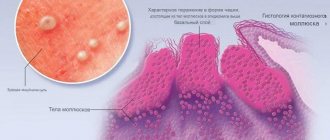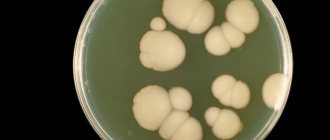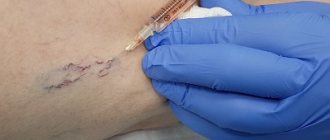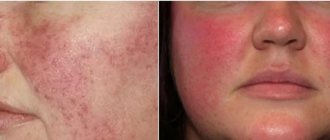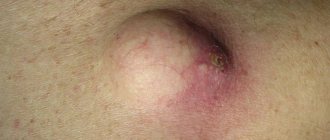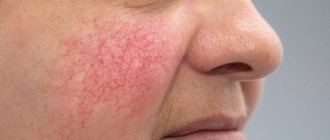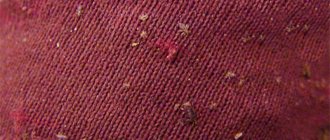A gentle blush and glowing skin are the result of self-care and good blood circulation on the face. But rosy cheeks are not always a sign of health. Unfortunately, sometimes unpleasant red dots and spider veins begin to appear on the skin. This is rosacea. It can appear all over the body. But such “stars” on the face (in fact, these are dilated blood vessels) worry us most of all. And then we turn to medical cosmetology to remove the capillary network on the face. This redness is caused by dilated blood vessels that extend almost to the surface of the skin. Most often, this pathology overtakes those with thin and delicate skin. They should be especially careful when carrying out many procedures, chemical peels and using strong scrubs. Sensitive skin reacts most acutely to such intervention. And besides this, such a vascular network on the face does not have the best effect on our perception of our own appearance.
Modern cosmetologists offer an effective means of combating the manifestations of rosacea, allowing you to restore a healthy natural glow and an even, fresh complexion. Removing blood vessels with a laser is a painless and safe way to get rid of spider veins.
In this article, we will study in detail what rosacea is, why it manifests itself, what methods besides laser therapy exist to remove it and achieve ideal skin, and is it easy to remove the vascular network on the face?
What are rosacea and rosacea?
Rosacea and rosacea are types of vascular pathologies that are characterized by the appearance of dilated blood vessels. As a result, the skin acquires a reddish tint.
Rosacea is a chronic skin lesion that occurs with rashes and redness. That is why the pathology received a name that speaks for itself - pink acne.
Today, there is no exact explanation for why rosacea occurs. The disease can be triggered by diet, hormone imbalance, or predisposition. Alcohol consumption, stress, hypothermia, allergies - any factors that provoke vasodilation - contribute to the occurrence of rosacea.
Cuperosis is an expansion of small capillaries that causes redness of the skin. Due to expansion, the walls of blood vessels become thinner and lose their elasticity. The vessels fill with blood, giving the skin a reddish tint. If the disease progresses, stable networks of blood vessels form on the skin, covering large areas of the face.
Cuperosis can be attributed to a physiological feature that requires treatment. Prolonged manifestations of rosacea lead to a lack of oxygen and nutritional components in skin cells. The skin loses water, becomes dry, its color deteriorates, and aging processes begin prematurely.
What do rosacea and rosacea look like? Spider veins and spider veins appear on the skin. They often occur in the T-zone. Those with sensitive, fair skin are most susceptible to vascular pathologies.
Signs of development of vascular disorders
Facial redness
This is the initial stage of vascular disorders, which is called erythrosis. Occurs under certain circumstances and provoking factors. Sometimes it appears for no reason. The wings of the nose, cheeks and chin are most prone to the onset of the disease. The sensitivity of the skin in these areas increases and it becomes red. A sick person complains of fever, itching, and tingling. This state can last from a couple of minutes to two hours. This skin pathology on the face can spread to the neck.
Constant redness
In problem areas there is already a constant state of redness of the skin. Spider veins and stars begin to appear, as well as pigmentation.
This condition is similar to a flush or sunburn that does not go away.
Skin changes
The skin becomes thinner, dries out, and has a grayish color. Inflammation begins in problem areas, sometimes they become covered with a rash. The disease progresses gradually and its third stage without treatment occurs 20-30 years from the onset of the pathology.
What are the differences between rosacea and rosacea?
What rosacea and rosacea are is easy to understand. But the diseases are difficult to distinguish from each other without qualified help. Couperosis or rosacea can be determined by symptoms. The main difference is that rosacea is never accompanied by purulent inflammation, the skin is smooth, without compactions.
Couperosis and rosacea on the face have differences in symptoms. With rosacea, small and large blood vessels are affected, causing the skin to acquire a reddish tint. In rare cases, rosacea is accompanied by a fiery skin color - there is a feeling that the skin is burning, but in fact there are no painful symptoms.
Unlike rosacea, rosacea is accompanied by painful sensations. In addition to redness, purulent inflammation and uneven relief are formed. The difference between rosacea and rosacea on the face is itching.
The difference between rosacea and rosacea is the course of the disease. Rosacea occurs in several stages:
- Erythematous. Temporary redness of the skin occurs. Subsequently, the redness becomes persistent.
- Papulopustular. In the area of redness, rashes filled with reddish liquid appear. They arise due to metabolic disorders in the skin and vasodilation. Blood seeps into the surrounding tissues, coloring them in a characteristic color.
- Phimosis. Densified nodules and plaques form on the skin.
- Rhinoform. Accompanied by an increase in the size of the nose. This stage is typical only for men.
Why spider veins appear on the face: the main causes and treatment methods
Cosmetologists distinguish three main types of rosacea:
- Venous
- Arterial
- Capillary
Most often, this problem is faced by women with thin and most sensitive skin, because they suffer the most from temperature changes, exposure to cosmetics and sunlight.
However, it is important to understand that a network of spider veins can cause anxiety not only for older ladies, but also for very young ladies. Couperosis can even occur in children and adolescents, especially if it is passed on to them at the genetic level.
Here are the main signs of its manifestation:
- The appearance of redness on the skin that does not have clear boundaries. Most often they form in the areas of the forehead, wings of the nose, and chin.
- Itching that causes discomfort after washing, walking in the fresh air and or applying cosmetics.
- Burning and tingling sensations.
- A network of blood vessels that becomes noticeable on the surface of the face.
All these signs characterize the initial stage of rosacea.
A neglected situation is characterized by such phenomena as:
- Formation of relief seals.
- The appearance of pinkish acne.
- Dark red bumps in the affected area.
How is rosacea diagnosed?
Regardless of the nature of the disease (rosacea, demodicosis, rosacea), treatment is preceded by diagnosis. A cosmetologist will determine whether the patient has rosacea or rosacea. An examination, blood test, and in some cases, scrapings of the affected skin areas will be required. If necessary, the doctor will prescribe an ultrasound of the internal organs to rule out diseases that can provoke skin reactions.
The task of a cosmetologist is not only to eliminate the external manifestations of rosacea on the skin, but also to establish the cause of the disease. To do this, it is necessary to examine the state of the gastrointestinal tract and endocrine system - to exclude gastritis, colitis, hormone imbalance, etc.
Diagnostics
To determine rosacea on the body, a dermatologist does not need much research. But it is important for patients to understand that they cannot do this on their own; it is necessary to differentiate this condition from others that may be more dangerous.
For diagnostics the following are used:
- Examination, history taking and dermatoscopy.
- General urine and blood tests, biochemical blood tests, as well as tests for certain types of hormones.
- Ultrasound of the thyroid gland and abdominal organs (optional).
If a specialist suspects hidden diseases, this list may expand.
What should you not eat if you have rosacea?
Rosacea and rosacea on the face are diseases that require a comprehensive approach to treatment. First of all, this concerns nutrition. To get rid of rosacea, you need to exclude dangerous and harmful foods from your diet:
- Sweet and floury. They contain sugars that cause inflammation
- Dairy products. Progesterone, which dairy products are rich in, enhances the functions of the sebaceous glands - there are more purulent inflammations on the skin.
- Alcohol. It has been scientifically proven that alcoholic drinks themselves do not cause rosacea, but aggravate the course of the disease. Alcohol dilates blood vessels and causes an additional blush on the face.
- Products containing caffeine (tea and coffee). They stimulate the production of the hormone cortisol, which triggers stress. Stressful situations often lead to inflammation on the skin.
- Canned, pickled, salted, fried and spicy foods. They lead to acne on the skin, dilate blood vessels, and weaken the immune system.
- Citrus and sweet fruits. Causes skin inflammation.
Can rosacea be cured permanently?
Regardless of whether it is telangiectasia, rosacea or rosacea, treatment should be comprehensive. The peculiarity of rosacea is that despite external signs, the causes are hidden deep in the body. And to get rid of rosacea forever, you need to identify and eliminate the cause of the disease.
Treatment of rosacea and rosacea is carried out in several directions. As a rule, an endocrinologist and cosmetologist develop a comprehensive treatment plan that is aimed at quickly eliminating the external manifestations of the disease and deeply treating the causes of rosacea.
Treatment of rosacea and rosacea consists of the following steps:
- Proper skin care. Careful hygiene, selection of cosmetics, daily use of cream with SPF protection. Acid peels, products containing alcohol, and rough scrubs are contraindicated for rosacea.
- Therapeutic treatment. Based on the use of antibacterial and antiseptic agents that eliminate the causes and consequences of acne.
- Drug treatment. Depending on the indications, the patient may be prescribed medications, hormonal drugs, etc.
- Hardware treatment. Elimination of spider veins using hardware methods.
Phototherapy
This procedure is very similar in principle to laser therapy. It will help you forget about the problem of rosacea forever, and in a fairly short time, without causing any discomfort. Another advantage of this method is the fact that, together with a network of capillaries, you can say goodbye to age spots, improve complexion and skin elasticity.
The full course of procedures consists of 5-7 sessions lasting about half an hour.
However, not everything is so rosy. We must not forget the side effects, such as:
- The appearance of white spots.
- Allergic reactions.
- Edema.
It is worth noting the high cost of such a technique. It is important to find a good clinic and a professional cosmetologist, therefore, when thinking about how and where to remove spider veins on the face, study the reviews of patients who have already undergone this procedure.
What cosmetic procedures can be done for rosacea?
When treating rosacea and rosacea on the face, you cannot do without cosmetic procedures. But not all of them are allowed for vascular pathologies.
The following help to effectively get rid of rosacea and rosacea:
- Phototherapy. Pulsed light affects pathological tissues. The targets of the rays are microorganisms and altered capillaries. Under the influence of photo flashes, old collagen fibers are destroyed and the production of new ones is started. The main feature of phototherapy is the ability to glue blood vessels. The rays heat the vessel to 60 degrees, which provokes blood clotting and the vessels become empty.
- Plasma therapy. The procedure is based on the use of autogenous plasma. Plasma therapy triggers skin cell restoration processes, normalizes metabolism, and saturates the skin with useful substances. In the dermis, collagen synthesis is enhanced and inflammation processes are reduced.
Recommendations after the procedure
After the procedure, swelling and redness of the skin may persist for 1-3 days.
To consolidate the result and speed up recovery, it is recommended:
- Refrain from sunbathing, visiting bathhouses, saunas and solariums for a month
- Avoid sudden temperature changes
- Use sunscreen and nourishing cream selected by a dermatologist according to your skin type
- If possible , refrain from wearing decorative cosmetics for 1-3 days after the procedure.
- Phototherapy eliminates the aesthetic consequences of vascular problems; to strengthen capillaries and prevent recurrent problems, it is recommended to use vascular strengthening products
Treatment of rosacea with M22 is an effective way to achieve beautiful and healthy skin!
It is recommended to delay phototherapy if:
- Pregnancy and breastfeeding
- Having a pronounced and intense tan
- Some skin diseases: psoriasis, dermatitis
- Acute infections, including skin infections
- A course of use of drugs that increase sensitivity to sunlight
- Eye diseases
- Presence of pacemakers or other metal-containing structures
Phototherapy with the M22 device helps to get rid of even deeply located vessels, while the procedure is completely safe, approved by the FDA and used by leading cosmetologists in many countries around the world.
The M22 device does not disrupt the pH balance of the skin and the protective lipid layer of the dermis, and rehabilitation after the procedure takes no more than a couple of days.
The M22 device allows for an individual approach - the doctor can select the type of platform module and light filter for each patient in accordance with his needs.
Can rosacea be treated with laser?
Couperosis and rosacea can be eliminated with laser. Vascular networks are cauterized with laser beams. The method is effective at different stages of the disease - both at the initial and in advanced cases.
Laser beams quickly and permanently eliminate redness and spider veins from the skin surface. The number of sessions depends on the stage of rosacea and rosacea.
Laser removal of rosacea and rosacea is an effective method for spider veins. The procedure allows you to get a pronounced result and does not require a long recovery period. The effect of the procedure lasts for several years.
Capillary mesh on the face: tolerate or remove?
You probably know and have seen where such a mesh pattern on the face is most pronounced. Most often, patients come to us who have thin red lines of blood vessels appearing on their face. The cheeks, nose, and sometimes the chin or forehead are especially affected. This not only complicates the health situation and makes you think about the state of the cardiovascular system, but is also an aesthetic problem.
When thinking about removing capillary mesh on your face, you must understand that procedures and doctor’s advice alone will not be enough. It is important to minimize the impact of internal and external irritants to help your skin recover, strengthen and glow.
Modern clinics offer various ways to remove venous mesh on the face:
- photocoagulation (laser exposure);
- electrocoagulation (exposure to electric shock);
- phototherapy (there are different techniques);
- ozone therapy (exposure to ozone gas)
- sclerotherapy (introduction of special compounds directly into the vessels);
- radio wave surgery.
All methods and techniques have their own specifics. If you decide to remove the vascular network on your face, you should choose them together with a qualified specialist, preferably one who has a medical education and experience in working with similar cases. Don't be afraid to ask questions, because we are talking about your health and appearance.
In our clinic, all cosmetologists are educated in the medical field and know how to select the right treatment for spider veins. We practice laser removal. The method of using a laser to solve the problem of vascular pattern is called effective, powerful and safe.
Is it possible to do a chemical peel for rosacea?
Couperosis or rosacea on the face are diseases that require careful skin care. Aggressive chemical peels can only worsen the disease. Unprofessional acid peeling provokes persistent redness - the skin takes a long time to heal after the procedure. An unskilled approach to therapy and an illiterate selection of home remedies will aggravate the course of the disease. A cosmetologist knows how to treat rosacea and rosacea on the face.
For rosacea and rosacea, only delicate peels are indicated (for example, using mandelic or lactic acid). Antioxidant monopilings are prescribed for the erythematous form of rosacea. Superficial almond peeling does not cause peeling or burning.
For the pustular form, combinations of azelaic and lactic acid can be used. They inhibit the production of reactive oxygen species and regulate the formation of secretion from the skin glands. The doctor selects the acid composition for peeling individually depending on the nature and course of the disease.
What is rosacea and how to get rid of it?
Cuperosis can be either an independent manifestation of changes in the skin or a sign of serious diseases. Cuperosis occurs in several stages:
- Rapid redness for no obvious reason. After a while, the redness disappears without consequences - the vessels are still elastic to restore their original state.
- A characteristic pattern of blood vessels appears on the skin. This is a sign that the blood vessels cannot return to normal.
- Chronic blood circulation disorders and lack of nutrition of skin cells.
A cosmetologist knows how to treat rosacea and rosacea. You can get rid of skin pathologies in a comprehensive manner by identifying the cause of the disease. If rosacea is caused by a disease of the internal organs, they need to be treated first. The use of only external agents will eliminate the manifestations of rosacea, but will not protect against the appearance of new spider veins. A combination of therapy methods that complement each other will achieve lasting results.
What should you not do if you have rosacea?
Rosacea and rosacea, although not the same thing, have similar limitations. If you have rosacea, you should avoid the following:
- baths and saunas
- artificial tanning in a solarium
- traumatic facial cleansing
- laser resurfacing
- cosmetics with acids and alcohol
- scrubs and peelings with hard particles
- thermal masks
- contrasting washes
Acne, rosacea and rosacea should be treated by eliminating harmful foods from the diet:
- alcohol and carbonated drinks
- baked goods, sweets and cakes
- all types of red meat
- canned, spicy and salty foods
Why are capillaries damaged?
There are a number of reasons for this, which can be divided into external and internal.
Doctors consider external threats to include:
- Alcohol and cigarette abuse
- The predominance of hot, hot, spicy foods in the diet
- Hot coffee and tea more than 2 cups per day
- Poor quality care and use of “bad” decorative cosmetics
- Frequent and prolonged exposure to the sun, especially without the use of high SPF protection products
- Visiting baths, saunas
Among the internal risk factors are:
- Autoimmune spectrum diseases
- Pathologies of the digestive system
- Atherosclerosis and other vascular diseases
- Rosacea
- Hormonal imbalance
It is important to understand that people with fair, sensitive, irritation-prone skin are more likely to suffer from rosacea.
